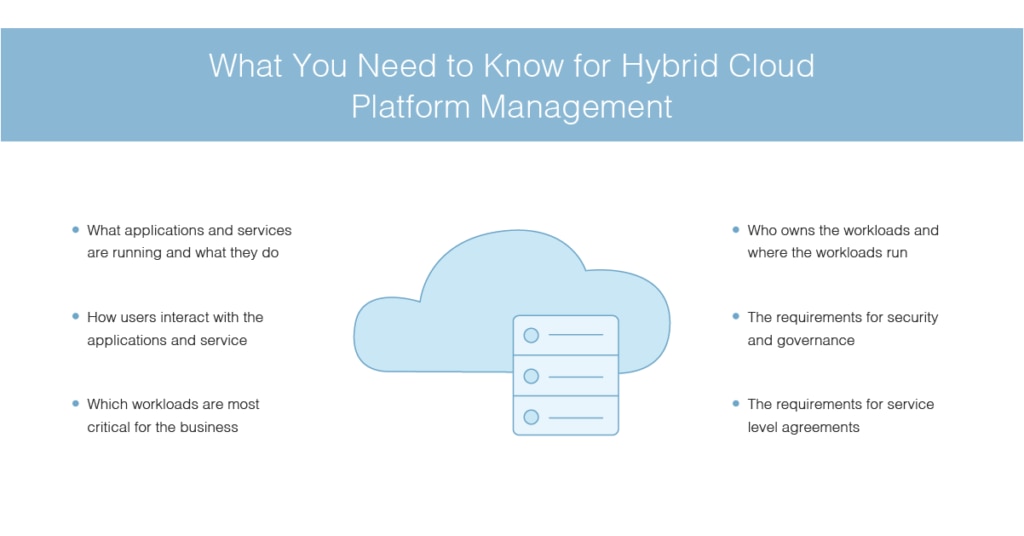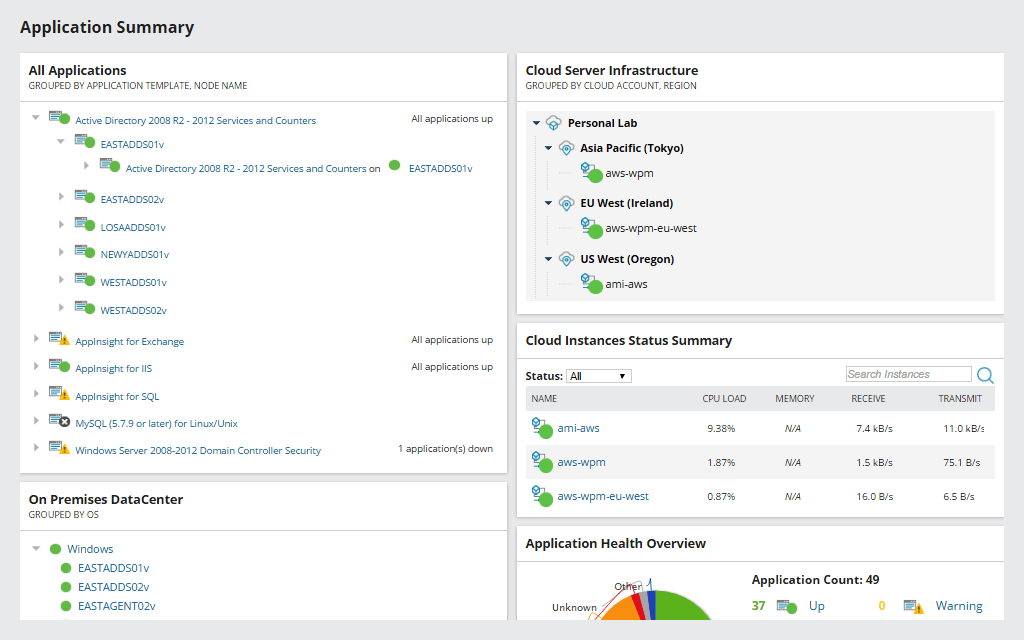Using a hybrid of public and private cloud computing, or a mix of cloud and on-premises solutions, is a great option for many companies. This approach provides the best of both worlds, encompassing flexibility, security, performance, and more.
The challenge comes with hybrid cloud management, as this approach is more complex than having everything in one place. To get the most out of your hybrid cloud, it’s essential to use the right hybrid cloud management software and follow best practices.

What Is Hybrid Cloud Management?
Why Is Hybrid Cloud Management Important?
How Does Hybrid Cloud Management Work?
Hybrid Cloud Management Tools
Undertaking Successful Hybrid Cloud Management
What Is Hybrid Cloud Management?
With a hybrid cloud, you have multiple infrastructures needing to work together, typically with a mix of public and private clouds and solutions.
Hybrid cloud management provides a way for these different deployments and environments to work together. Most often, companies use software to ensure all operations work smoothly across multiple environments. This also provides administrators with an easy way to view and manage all the information and assets in a single place.
Why Is Hybrid Cloud Management Important?
Effective hybrid cloud management offers several benefits:
- By managing all aspects of the hybrid cloud in one place, administrators can more easily review details and make changes. If they need to make a change or adjust resources, it’s much simpler to do so from one location instead of working with each environment separately.
- Along with simplicity comes efficiency. Since administrators don’t need to spend as much time maintaining environments individually, they can use their time more effectively to optimize operations, address any issues, and assess performance.
- Improved workflows. Additionally, hybrid cloud management improves workflows. This includes streamlined processes for permissions, approvals, and deployments. A good solution will also be able to automate reports to review current processing and forecast future needs.
How Does Hybrid Cloud Management Work?
Once you know why hybrid cloud management is important, you need to understand how it works. This includes finding a good tool, but it also involves having a strategy.
The first step is to understand what you need to manage. This includes:
- Verifying the applications involved and what they do
- Gaining visibility into the way users interact with the applications
- Understanding the criticality of the workloads to the business
- Identifying who owns the workloads
- Confirming where workloads run
Another important aspect of hybrid cloud management is understanding the requirements for security and governance. Security needs to be a focus from the start, and mechanisms like identity and access management (IAM) make this simpler by giving you ways to assign identities to servers, people, devices, and data. Having those assignments makes it easy to manage access. Additionally, security requires encryption for all information, both when it’s at rest and when it’s in use.
Service-level agreements (SLAs) also need to be considered as part of the hybrid cloud management strategy. SLAs are contracts promising specific levels of service to the end user, with penalties if those levels aren’t met. Knowing what those promises are is an essential part of making sure the hybrid cloud manager meets expectations.
Hybrid Cloud Management Tools
The final key to effective management is choosing from the many hybrid cloud management tools. This could mean either a standalone solution or a consolidated hybrid cloud management platform.
Tools to support hybrid cloud cover many areas, such as performance management, resource management, security management, and network management. Capabilities to look for in these types of solutions include:
- Having a unified view of all the cloud environments, including what applications and services are running
- Providing alerts and actionable data to help streamline workloads
- Delivering seamless service to the end user
Not every company needs the same set of tools, though. When you focus on the needs identified for your business, you can find a solution to match those requirements. For example, if you need encryption and cloud performance monitoring, you’d look for a tool to support those needs.
One of the best hybrid cloud management solutions is SolarWinds® Server & Application Monitor (SAM). SAM is easy to use and provides comprehensive support for hybrid cloud management. Features include:
- Round-the-clock monitoring for applications running in public, private, or hybrid cloud environments
- Side-by-side comparison of data types with drag-and-drop functionality to overlay and correlate information
- Predictive insights to help you balance workloads and optimize provisioning
- Out-of-the-box templates to support best practices for over 200 applications
- Flexibility to monitor custom applications

SAM provides all this and more to give you coverage and control over your hybrid cloud. It comes with a free trial, good for 30 days, during which the software is fully functional.
Undertaking Successful Hybrid Cloud Management
Hybrid cloud solutions are a good approach for many companies, provided you undertake effective management processes. Successful hybrid cloud management starts with fully understanding the requirements of your business, which you can then use to find the best fit among the many tools on the market.
SolarWinds Server & Application Monitor is my recommended hybrid cloud management solution. It reduces the complexity of hybrid cloud management by giving administrators end-to-end visibility into all applications, including alerts and forecasting tools, along with a single area to manage the hybrid cloud.
Whether you go with SAM or another solution, the key is to find a tool designed to help you manage the complexities of the hybrid cloud and keep everything running smoothly.
